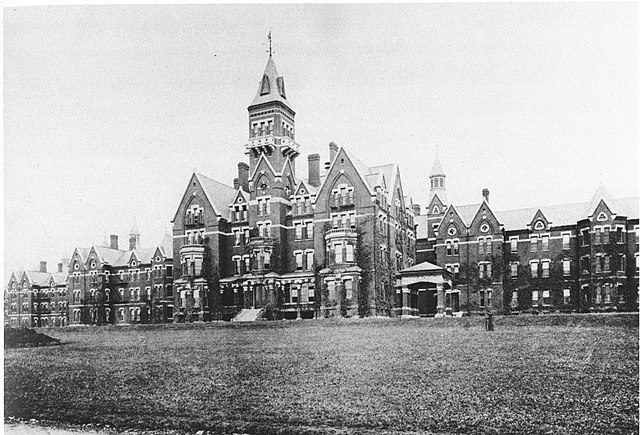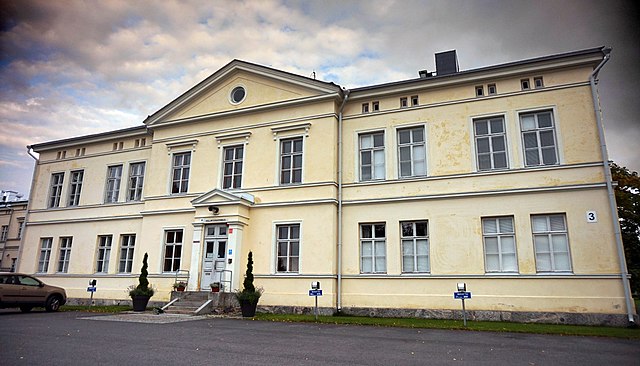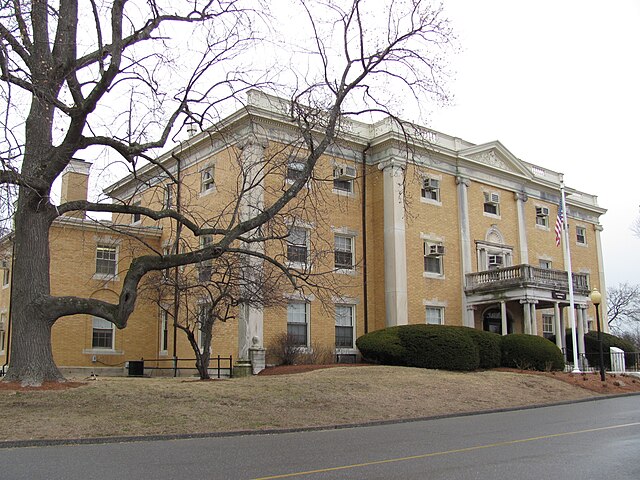Deinstitutionalisation is the process of replacing long-stay psychiatric hospitals with less isolated community mental health services for those diagnosed with a mental disorder or developmental disability. In the late 20th century, it led to the closure of many psychiatric hospitals, as patients were increasingly cared for at home, in halfway houses and clinics, in regular hospitals, or not at all.
The former St Elizabeth's Hospital in 2006, closed and boarded up. Located in Washington D.C., the hospital had been one of the sites of the Rosenhan experiment in the 1970s.
Vienna's Narrenturm—German for "fools' tower"—was one of the earliest buildings specifically designed for mentally ill people. It was built in 1784.
St. Loman's Hospital, Mullingar, Ireland, an infamous psychiatric hospital.
The water tower of Park Prewett Hospital in Basingstoke, Hampshire. The hospital was redeveloped into a housing estate after its closure in 1997.
Psychiatric hospitals, also known as mental health hospitals, or behavioral health hospitals are hospitals or wards specializing in the treatment of severe mental disorders, including schizophrenia, bipolar disorder, eating disorders, dissociative identity disorder, major depressive disorder, and others.
Danvers State Hospital, Danvers, Massachusetts, Kirkbride Complex, c. 1893
Niuvanniemi Hospital in Niuva, Finland
McLean Hospital's administration building in Belmont, Massachusetts; the hospital treated several notable New England residents, including Massachusetts governor Nathaniel P. Banks, musician James Taylor, and poet Anne Sexton
York Retreat, built in the late 18th century by William Tuke, a pioneer in moral treatment of the mentally ill








